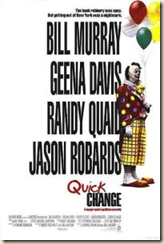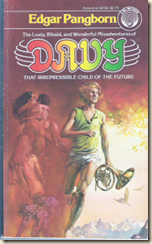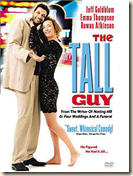1967-69, 1970-75
Steve Winwood (organ, piano, guitar), Jim Capaldi (drums, percussion), Chris Wood (flute, saxophone), Dave Mason (Guitar), others.
Wikipedia page
One of the problems with the classic rock radio format is that it concentrates on singles. While there are many fine groups who made both successful singles and albums, there are others that were primarily album groups. In the 70s, that was fine, but as time went on, they stopped getting airplay on classic rock stations and faded away.
Traffic was one of the best of these. They're remembered, at best, for one song (that wasn't a hit single, oddly enough), and for being one of the early groups that starred Steve Winwood before he became a successful solo artist. But back in the 70s, it was in the top tier of groups out of the UK.
Winwood started performing professionally at age 15, and writting and singing the hit singles "I'm a Man" and "Gimme Some Loving" for the Spencer Davis Group when he was 19. After leaving the group, he wanted to start out with his own group. Picking several musician friends -- Jim Capaldi, Chris Wood, and Dave Mason -- he formed Traffic (the name comes from their desire to "keep music moving" and they included a logo of arrows curved into a roundabout) and recorded their first album, Mr. Fantasy, in a studio in Berkshire, UK, that Winwood built with the money he made from the Spencer Davis hits.
But there was already trouble. Winwood and Capaldi (who wrote together) had disagreements with Mason about where they wanted the group to go. Mason evidently wanted to stick with pop tunes, while Winwood/Capaldi leaned toward jazz and blues. Mason walked out while the album was being finished.
The group had two UK hit singles with Mason's "Paper Sun" and "Hole in My Shoe," but when the album was released in the US, Mason's other contributions were left off* and he wasn't listed as a musician (though he did get credit for his songs that remained). In addition to the two British singles, the album featured gems like "Colored Rain," "No Face, No Name, No Number," "Heaven is in Your Mind," and, of course "Dear Mr. Fantasy," a musing on life as a rock star. Winwood and Capaldi has voices that meshed brilliantly; even when they were singing the same note. It was an artistic success, and did well enough to allow for a second album.
 And between albums, Mason returned. Whatever differences everyone had, they decided to put them aside and continue. The result -- called simply Traffic -- was considered even better. Winwood and Capaldi contributed songs like "Pearly Queen," "Who Knows What Tomorrow May Bring," "40,000 Headmen, and "Vagabond Virgin," while Mason's more pop contribution included "You Can All Join In," "Crying to the Heard," and the classic "Feelin' Alright?", by far their most successful song.**
And between albums, Mason returned. Whatever differences everyone had, they decided to put them aside and continue. The result -- called simply Traffic -- was considered even better. Winwood and Capaldi contributed songs like "Pearly Queen," "Who Knows What Tomorrow May Bring," "40,000 Headmen, and "Vagabond Virgin," while Mason's more pop contribution included "You Can All Join In," "Crying to the Heard," and the classic "Feelin' Alright?", by far their most successful song.**
But the tension in the band returned and Traffic broke up. Several leftover tracks (Traffic was originally planned as a double album) and a live performance were put together in their "final" album Last Exit.
Winwood joined up with a couple of musicians from an obscure group named "Cream," to form Blind Faith.*** The others added a musician billing himself as Wynder J. Frog to form Mason, Capaldi, Wood, and Frog, which did some live gigs but never got an album contract.
Once Blind Faith fell apart, and after a short stint touring with Ginger Baker, Winwood returned to his Berkshire studio to record a solo album, to be titled Mad Shadows.**** During the recording, he asked Capaldi to help him with the songwriting. Then they decided that Chris Wood would be just the person to add flute and sax. And with them all there, it was a simple step to decide to reform Traffic.
The result, John Barleycorn Must Die, was a triumph. All six songs on the record were gems, starting with the aptly named instrumental, "Glad," then with "Freedom Rider," "Empty Pages," the superb "Stranger to Himself," "John Barleycorn" (an old folk song done as straight folk) and finally, "Every Mother's Son." It was their biggest success, reaching #5 on the US charts.
But there were problems. The instrumental lineup -- organ, woodwinds, and drums -- was awkward live. In addition, Jim Capaldi, while a fine drummer in the studio, tended to get excited and off the beat when in front of an audience. His songwriting and vocals were essential to the group, but his drumming had to be improved.
So the group brought in help. Ric Gretch, who was the most obscure musician in Blind Faith, joined on bass, while Jim Gordon became the drummer. Gordon was one of the top session drummers in the business, and played with such people as Delaney and Bonnie, the Byrds, the Beach Boys, Joe Cocker, George Harrison, and, most famously, Derek and the Dominoes§. Finally, they added Ghanaian percussionist Rebop Kwaku Baah and started recording.
The result was The Low Spark of High Heeled Boys. This was another triumph -- six songs that were nearly of the level in the previous album. The title song is what is most commonly Traffic song played on the radio, a condemnation of the record industry. The album also includes standouts like Capaldi's "Light Up and Leave Me Alone," Gretch's "Rock and Roll Stew," and Winwood's "Many a Mile to Freedom" and "Hidden Treasure."
About this time, the group went on the road in the UK. And, for some of these performances, Dave Mason rejoined.
So when Winwood's old record company insisted he owed them an album, the live album was released. Though not technically by Traffic. Each of the musicians were listed on the cover, so the album -- Welcome to the Canteen -- is listed as by Steve Winwood, Jim Capaldi, Dave Mason, Chris Wood, Ric Gretch, Rebop Kwaku Baah, and Jim Gordon, certainly one of the longest band names for an album (it did, however, have the Traffic logo, which appeared on all their albums).
 While not a great album, Welcome to the Canteen is quite good as contractual obligation albums§§ go. It includes a mix of Traffic songs, a couple of Dave Mason solo songs, plus "Gimme Some Lovin"" from the Spencer Davis days.
While not a great album, Welcome to the Canteen is quite good as contractual obligation albums§§ go. It includes a mix of Traffic songs, a couple of Dave Mason solo songs, plus "Gimme Some Lovin"" from the Spencer Davis days.
But nothing lasts, especially with Traffic. Gretch left, as did Gordon§§§. They were replaced with David Hood and Roger Hawkins, respectively, both members of the Muscle Shoals house band where Capaldi had done some solo recording.
The new lineup put out Shootout at the Fantasy Factory. While not reaching the heights of the previous two studio albums, the title song is another great one.
Traffic went on the road for another live album with this new lineup. On the Road was a nice album, but the songs were not up to the studio versions.
After the tour, Hood and Hawkins returned to Muscle Shoals, and Rebop moved on. Adding bassist Roscoe Gee, the group put out When the Eagle Flies, a decent effort (which sold well), but without any real standout cuts. Of note to me is that former Bonzo Dog Band member Vivian Stanshall co-wrote one song on the album, a role he later played with out Winwood compositions.
After a tour, Traffic broke up. Winwood had a very successful career as a solo artist, most notably with "Back in the High Life" and "Arc of a Diver." He put out a new album this year. Capaldi had some success as a solo artist and songwriter, dying of stomach cancer in 2005. Chris Wood's story was even sadder, as he died of pneumonia in 1983. All is not sadness, though: Dave Mason's solo career also goes on (with some weird detours like an album he recorded with Mama Cass Eliott) and he's best known for his hit "We Just Disagree."
But the group faded from memory. Though they had several top ten albums, they never had any big US hits. "Low Spark" gets airplay, but little else, and the group gets short shrift as just a station along the road of Steve Winwood's career.
But they should take their place among the top half dozen UK groups of their era.
*It didn't hurt the album any. They weren't very good.
** In terms of cover versions. At one point, a new version of the song was being released every three weeks, most famously by Joe Cocker.
*** The king of the supergroups. When it came out, though I didn't know about Winwood and wondered why he was writing the songs instead of Eric Clapton.
****Not to be confused with the Mott the Hoople album of the same name.
§ (Got tired of asterisks.) He shared songwriter credits on "Layla," which would have made him a rich man today, if he were allowed to spend the money.
§§ These are albums that the record company insists the artist record to fulfill a contract, usually after the artist left the record company on bad terms. The need to produce an album for people who you are pissed off at leads to interesting artistic tension, though generally the musicians will record a half-assed album and hope it doesn't disappoint their fans.
§§§ Gordon, alas, developed schizophrenia and ended up murdering his mother, evidently believing she was the voice in his head that was tormenting him. He was convicted of murder (his attorney was unable to use the insanity defense) and is still in prison.



























